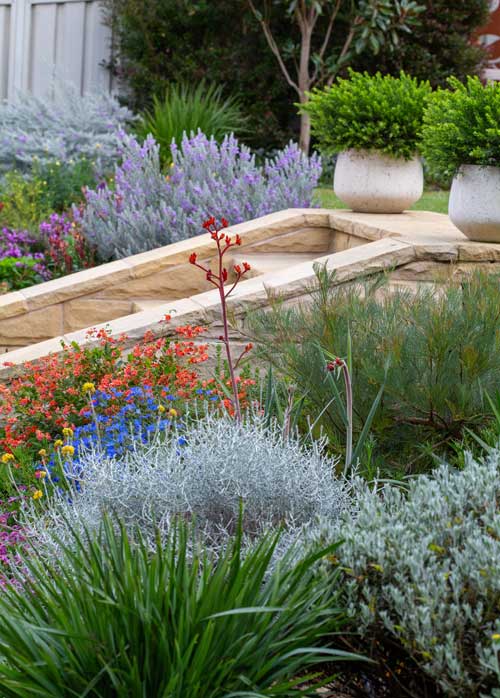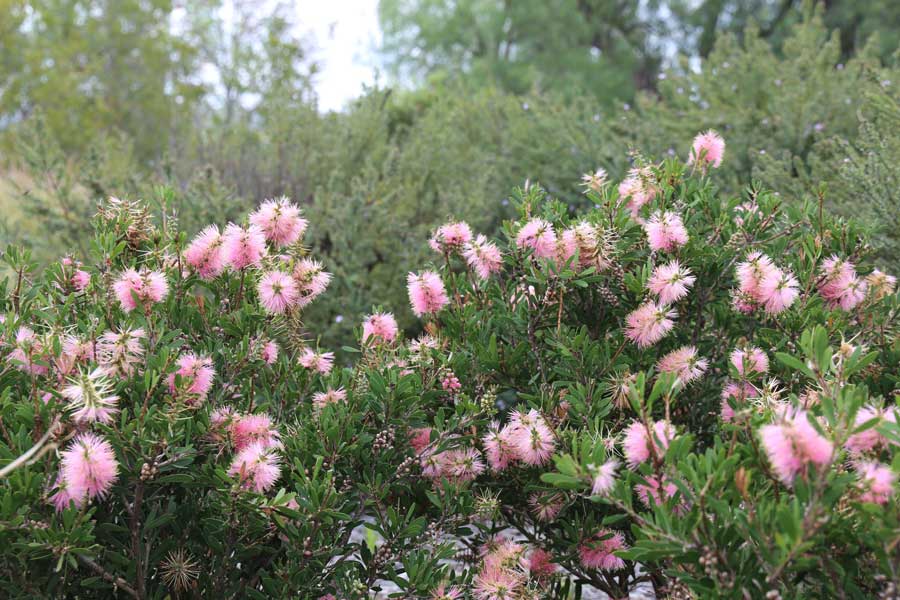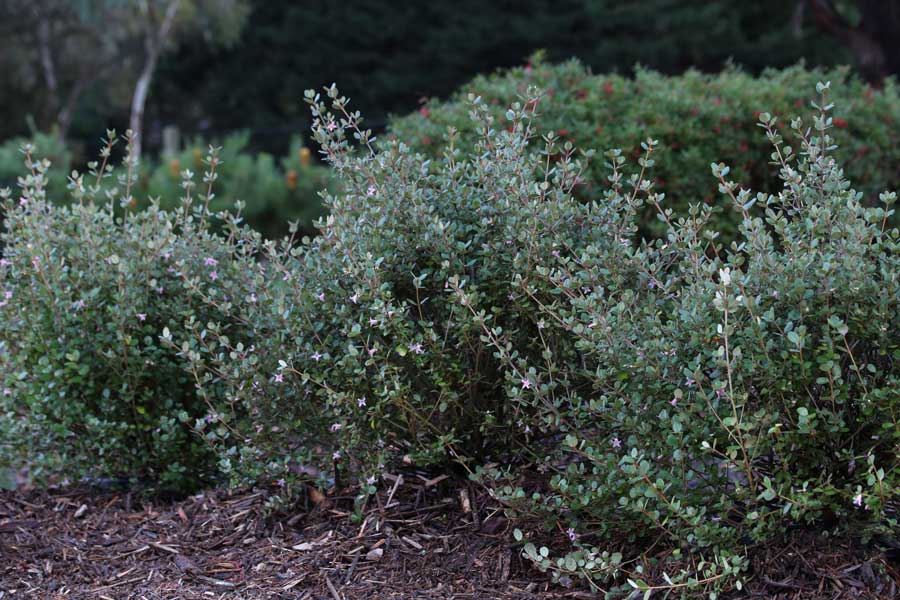Ever wondered which native perennials thrive best in Australian gardens?
As gardeners, landscape architects, and horticulturists, we all know that selecting the right plants for our gardens is the first step.
In this article, we’ll explore some of the best native Aussie plants that you can incorporate into your cottage garden, bush style garden, or contemporary Australian native garden plant palette.
An Australian cottage garden focuses on native perennial plants. It’s up to your own personal taste whether you focus only on Aussie naties, or include a few exotics as well.

Understanding Perennials
Perennials are characterised by their ability to live and bloom for more than two years. They may die back each year or not, but the plant lives on to flower year after year.
This is unlike annuals and biennials that complete their lifecycle within one or two growing seasons respectively.
Annual and biennial plants’ strategy is to spend all of their energy on blooming and seed-setting, then dying to make way for the next generation. In contrast, perennials spend more energy on establishing themselves, meaning that their blooms may be slightly less exuberant.
Choosing native perennials for your garden has numerous advantages. You only have to plant them once, and then they live on and continue to bloom every year. Even some perennial flowers aren’t as exuberant as certain annual plants, you certainly won’t lack perennial options that rival even the showiest annuals.
Annuals and biennials can provide a splash of colour and variety immediately, and they don’t usually need any pruning. But they need replanting each year or every two years, which mean more work for the gardener.
Features of a Good Perennial
When choosing perennials for your garden, consider their growth habit, size, bloom time, flower colour, and foliage texture. These characteristics can significantly affect your garden’s overall aesthetic and functionality throughout the year.
A good perennial has been bred with good genetics, and it belongs in your garden horticulturally and aesthetically. Some plants have been bred with a superior ability to thrive in a variety of conditions, while other plants of the same species are more sensitive and quicker to die if conditions change quickly.
Take into account soil type, sunlight exposure, climate, nutritional needs, and water requirements when choosing perennials for your garden. Make sure that the plants you install together have complementary needs. If you plant a wet-feet plant with something that would drier soil, at least one of them will suffer.
Some plants may deter pests that tend to plague their neighbours, whilst others might enrich the soil with specific nutrients that their companion plants need to thrive. There are also plants that attract beneficial insects, promoting pollination and keeping harmful pests in check. This intricate dance of nature results in healthier, more robust plants and can lead to more prolific flowering.
This native plant is a stunning perennial plant that blooms spectacularly with baby pink bottlebrush flowers in spring. Sweet Burst™ Callistemon spp ‘CNU15’ PBR.
Top Native Perennials to Grow in Australia
Australia is home to a diverse range of native perennials that are well adapted to our unique conditions. The plants recommended here were chosen for their beauty, resilience, and suitability to Australian gardens.
- Callistemons (Bottlebrushes): Known for their vibrant, brush-like flowers, callistemons are a popular choice for Australian gardens. They’re hardy, drought-tolerant, and attract a variety of birds and insects.
- Lilly Pilly: This versatile plant type is known for its glossy foliage and colourful berries. Lilly pillies make excellent hedges or screens and can tolerate a range of soil types.
- Grevilleas: These come in a variety of forms, from ground covers to large shrubs and even trees. Grevilleas flower profusely and are loved by nectar-feeding birds and insects.
- Correas: Known for their bell-shaped flowers, correas are hardy and bird-attracting. They prefer well-drained soil and partial shade.
- Westringias (Native Rosemary): These hardy shrubs are ideal for coastal gardens, bearing small, rosemary-like leaves and delicate flowers. They’re also generally drought and frost tolerant.
- Pandorea (Wonga Wonga Vine): This vigorous climber produces clusters of trumpet-shaped flowers. Pandorea prefers well-drained soil and a sunny or partly shaded position.
- Hardenbergia (Purple Coral Pea): A beautiful climbing or trailing plant, hardenbergia blooms with purple, pea-like flowers in winter and spring. It’s drought-tolerant and prefers full sun to light shade. It also fixes nitrogen to the soil.
- Myoporum (Creeping Boobialla): This ground cover plant is perfect for suppressing weeds. It’s hardy, drought-tolerant, and produces an abundance of small, star-shaped flowers.
- Chrysocephalum (Yellow Buttons): A low-growing plant with silver-grey foliage and bright yellow flowers. It’s very hardy and tolerates poor soils and drought.
- Scaevola (Fan Flowers): These ground-covering plants produce fan-shaped flowers and are excellent for hanging baskets, borders or as a ground cover. They’re drought-tolerant and prefer a sunny position.
- Kangaroo Paws: Known for their unique, paw-like flowers, these plants make an excellent feature in any garden. They prefer a sunny location and well-drained soil.
- Dianella (Flax Lilies): These versatile plants have strappy leaves and produce stalks of blue or purple flowers. They’re often drought-tolerant and there are varieties that can handle a range of light conditions.
- Lomandra (Mat Rush): A tough, evergreen plant that’s perfect for mass planting or as a border. It tolerates a range of conditions including drought and frost.
- Native Grasses: Native grasses like Pennisetum, poa and imperata add texture to your garden and are generally low-maintenance. They can handle a range of soil types and light conditions.
- Carpobrotus (Pigface): This succulent ground cover is perfect for coastal gardens. It produces vibrant, daisy-like flowers and is very drought-tolerant. Avoid steep slopes as the leaves are heavy and the roots shallow, so it can slide down.
- Rhagodia (Saltbush): A hardy shrub that’s ideal for coastal areas. It has silvery leaves and can tolerate poor soils and salty winds.
- Eremophila (Emu Bush): Known for their tubular flowers, eremophilas are drought-tolerant and come in a variety of forms, from low ground covers to tall shrubs.
Each of these plant genera has its own unique requirements and characteristics, and different cultivated varieties often perform completely differently to wild types of the same species. Always check the plant’s label to see what it needs and whether you can provide it.
This native perennial shrub features beautiful pink blooms from autumn through early spring. Coastal Pink™ Correa alba ‘COR10’ PBR.
At Ozbreed New Zealand, our motto of “low fuss, functional and reliable” isn’t just a series of words. It’s a mission statement that we live by to breed plants that perform year after year in the degraded urban landscape. You can browse our catalogue of hardy, low-fuss native shrubs and ground covers here: https://www.ozbreed.com.au/plant-ranges/native-shrubs-groundcovers/
Conclusion
Most of the plants we grow in our native Aussie gardens are perennial. They work well in cottage style gardens, bush style gardens, contemporary native gardens, and even in mixed exotic-native planting palettes.
Don’t feel that you have to stick exactly to this list of plants. There’s a whole world of native flora for you to discover and plant in your garden.


